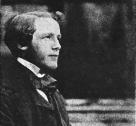Maxwell's Equations for Light & Other Electromagnetic Waves

"From a long view of the history of mankind - seen from, say, ten thousand
years from now - there can be little doubt that the most significant event of
the 19th century will be judged as Maxwell's discovery of the laws of
electrodynamics. The American Civil War will pale into provincial
insignificance in comparison with this important scientific event of the same
decade." — Richard Feynman,
The Nobel-Laureate Physicist of California Institute of Technology (Caltech)
Maxwell derived 4 equations which became so crucial for the development
of the understanding of physical phenomena. These equations were
repeatedly applied in developing newer and newer technology throughout
the Twentieth century. Radio, TV, Satelites, Radar .... the list will not end!
The year was 1864 when Maxwell presented those equations describing the
interaction among electricity and magnetism and matter. These studies
gave birth to a new field 'electromagnetism'.
Maxwell showed that the equations predict waves of oscillating electric and
magnetic fields that travel through empty space at a speed that could be
predicted from simple electrical experiments—using the data available at
that time, Maxwell obtained a velocity of 310,740,000 m/s. It was very close
to the speed of light and Maxwell could correctly make an educated guess
that light is indeed an 'electromagnetic' wave.
The quantitative connection that Maxwell established between light and
electromagnetism is considered one of the great triumphs of 19th century
physics. At that time, Maxwell believed that the propagation of electromagnetic
waves like light needed a medium called 'aether'. Over time, the existence of
such a medium, permeating all space and yet apparently undetectable by
mechanical means, proved to be more and more difficult to come in agreement
with experiments such as the Michelson-Morley experiment described in our
last posting. Moreover, it seemed to require an absolute frame of reference in
which the equations were valid. This was not reconciling well with the beauty
of a theory that Physicists strive for. The concept of 'aether' leads to the notion
that Maxwell's equations should change form for a moving observer.
These are the difficulties that inspired Einstein to come up with the theory of
special relativity and solve the Jigsaw puzzle of theoretical Physics at that time.
In that process Einstein abandoned the requirement of a luminiferous aether
and stated that time and space are not absolute.
Perhaps that's why Einstein later said, "The special theory of relativity owes
its origins to Maxwell's equations of the electromagnetic field."
The year was 1905 when Einstein forwarded that revolutionary theory.
Just 100 years back!

0 Comments:
Post a Comment